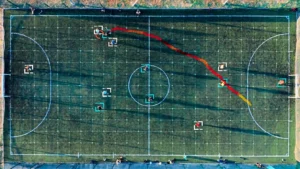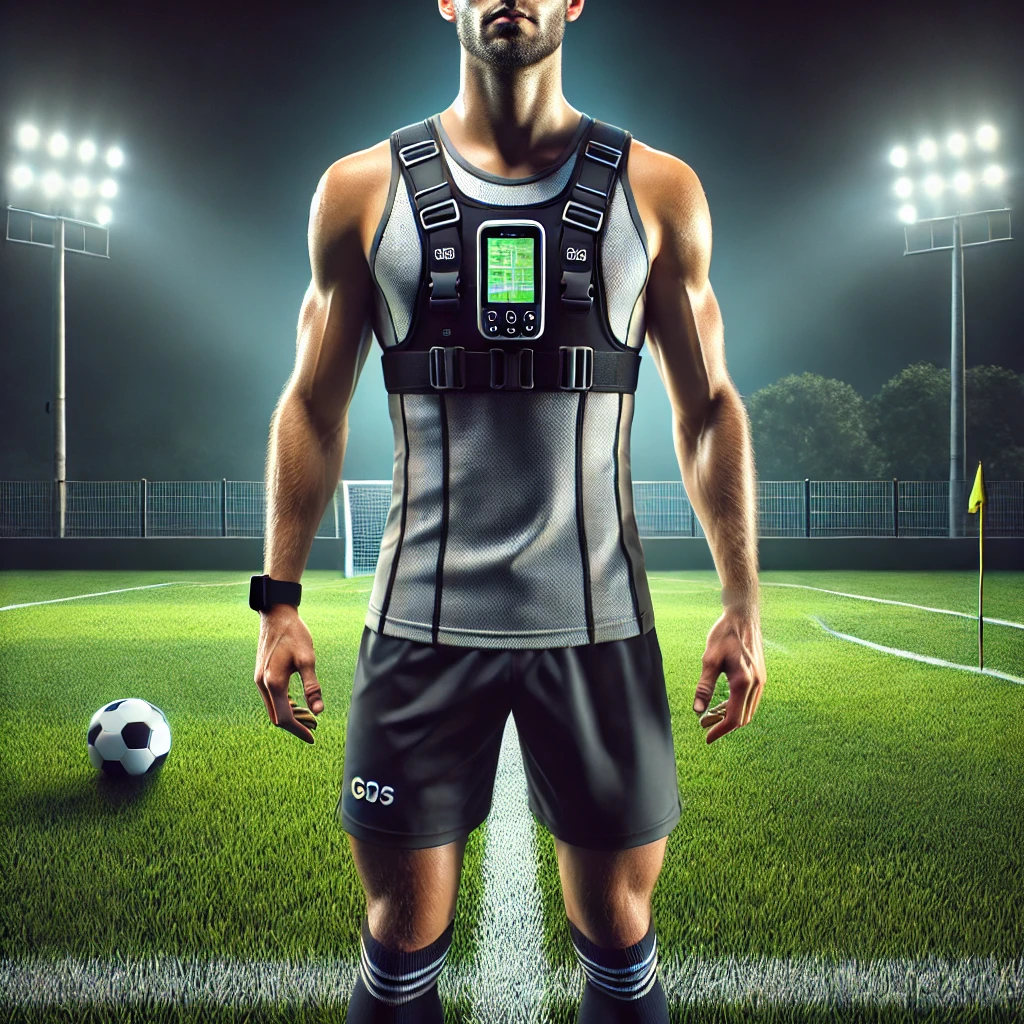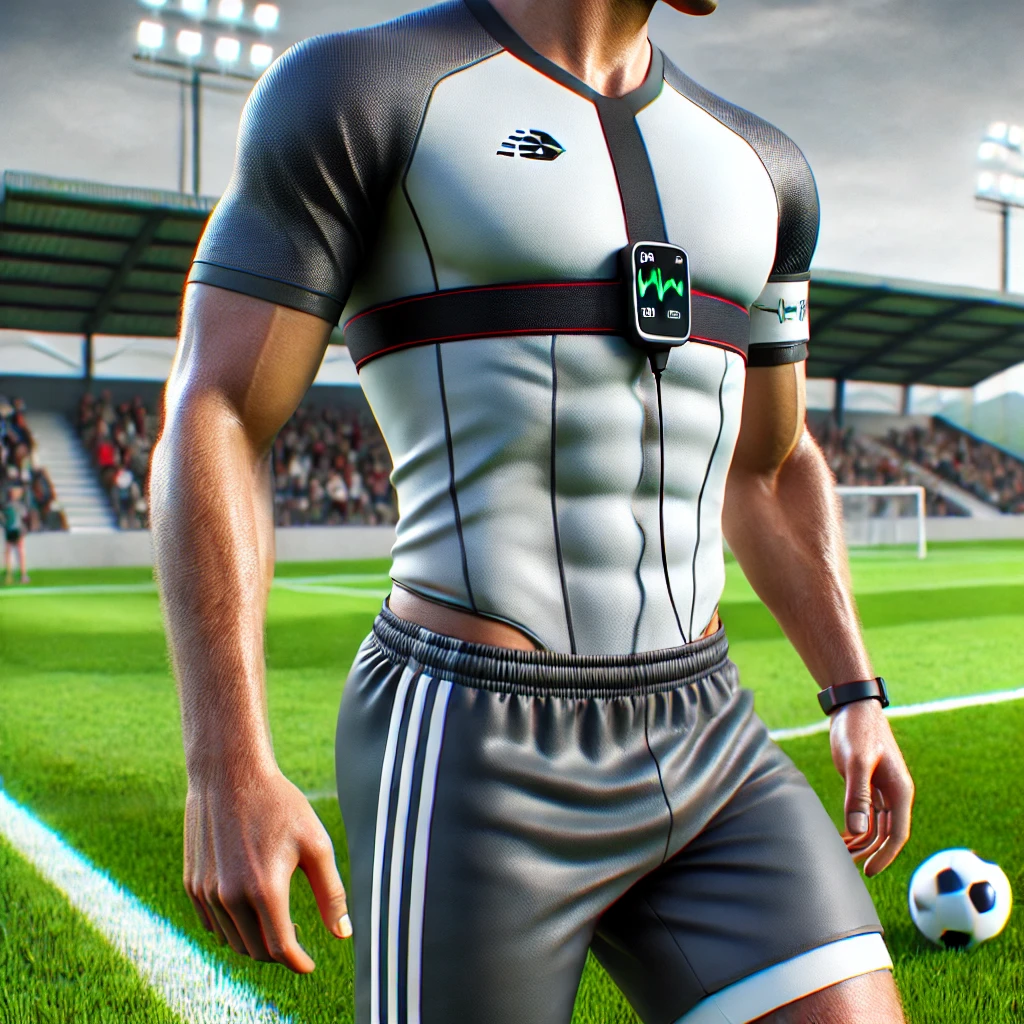
Wearable tech has become a useful tool for teams to monitor players’ physical conditions, track performance, and improve training strategies. These powerful devices provide insights into many attributes such as a player’s speed, to their heart-rate, helping coaches make effective decision that impact their performance positively. However, as time goes on, there is a future where these wearables may not be needed.
In this blog, we’ll look at the most popular wearables in football today and discuss what the future may look like without these physical devices.

One of the most common wearables in football today is the GPS tracker, typically worn in a vest under a player’s jersey. These devices track a player’s movement, speed, and positioning throughout the game, giving coaches accurate data on their activity. Other than performance analysis, GPS vests also help with injury prevention, tactical insights, and instant feedback. Some popular GPS trackers in football include: GPS-Vests also help with injury prevention, tactical insights, and instant feedback. Some popular GPS trackers in football include:
Used by teams worldwide, Catapult’s system can measure metrics such as distance covered, sprint count, and player workload. The data provided by Catapult GPS trackers allows coaches to tailor training sessions and manage player fatigue.
Another widely adopted GPS wearable, STATSports provides real-time feedback on distance, speed zones, and accelerations. It’s valuable for tracking player exertion during high-intensity periods and preventing overtraining.
While these GPS systems are a key component to every player, they have limitations. GPS trackers rely on satellite signals which can be inconsistent depending on where you are. They can also be uncomfortable for players, and in some cases, they can even forget to put them on. Not only that, but maintenance issues could arise as well. Another issue is the cost. With big squads, it can be expensive to buy a vest for every single player, which could be a problem for amateur clubs and players and could halt their progression as they could either not have an up-to-date version of the vest, and constant upgrades could be needed.
Heart rate monitors are often worn in straps around their chest, are already in the vests, or come in the form of a bracelet to track a player’s exertion levels. This data is the key component for measuring cardiovascular strain, recovery rates, and overall fitness.
Known for its accuracy, the Polar H10 is widely used by athletes across sports. It tracks heart rate variability (HRV), a metric often used to assess a player’s recovery and readiness for training.
WHOOP monitors heart rate, strain, and recovery, and its app provides detailed recovery and sleep analysis. This wearable is particularly useful for optimizing player wellness and ensuring they are fully recovered before taking the field.
While heart rate monitors provide a deep look into a player’s physical trajectory, they can be uncomfortable. Also, keeping track of your statistics through an application constantly could be risky as well, since over-relying on technology means that all your data could potentially be lost. Moreover, there could be unnecessary distraction due to the menta shift of in-game statistics to more health-related statistics, even though they are just as useful. Forcing players to keep their heart rate within a specific range could sway them away from their natural style of play.

Some teams have started to experiment with wearable cameras to capture a first-person, or POV perspective of the game. These devices are often mounted on a player’s chest, headgear, or sometimes on glasses as well. These cameras offer insights into a player’s field vision, decision-making, and awareness during matches. The footage can be analyzed to improve tactics and enhance spaitual awareness. In training environments, these cameras are especially valuable for gathering tactical and visual feedback to improve individual and team performance.
Worn on chest mounts or headbands during training (not in official matches), GoPros provide video feedback on how players move, perceive teammates, and make decisions.
This advanced eyewear tracks where players are looking during the game, offering valuable information on focus and reaction time.
Although wearable cameras provide something unique, they can be distracting and are unsuited for real-game scenarios. With advancements in smart camera systems embedded in stadiums, we may soon capture these visuals without replying on players wearing any equipment. Also, Just like any other wearable, they can cause physical discomfort especially in a high-contact sport like football. Also, since wearable cameras are primarily used in training, as many leagues don’t allow the use of the cameras in official matches. This limits their output for coaches and analysts because they are unable to gather in-game insights.
Today’s wearable technology in football gives clubs priceless data on player performance and health, but their physical nature limites them. Innovations and advancements in AI-driven cameras, field sensors, and smart stadium technology in the distant future may give players and teams the freedom to gain insights without needing wearable devices.
Imagining a future where GPS data and heart rate monitoring are captured by systems integrated into stadium infrastructures, such as AI-driven cameras could be solutions that improve data accuracy, player comfort, and obedience with match regulations, strengthening football analytics while allowing players to perform without distraction.
zone14 bietet Hightech- und KI-gesteuerte Kamerasysteme, die Leistungsdaten ohne tragbare Geräte erfassen. Im Gegensatz zum herkömmlichen Tracking ermöglicht zone14 dem Team, ein Spiel und einzelne Spieler zu analysieren, ohne dass die Spieler abgelenkt werden. Das Tracking der Spieler erfolgt bei zone14 über ein einziges Kamerasystem, das alle benötigten Daten erfasst, ohne die Leistung der Mannschaft durch andere Elemente zu beeinträchtigen.
Zone14 utlizes advanced cameras and AI technology that capture and analyze players’ movements, position, and game actions in real-time. This system can recognize play patterns, calculate distance traveled, and identify player speed. The result is a comprehensive, uninterrupted data set that teams can access without relying on GPS or wearable monitors.
Distance Covered: With zone14 STATS ,you can quickly track team movement and evaluate player performance with or without the ball, helping coaches make informed decisions about workload and game strategy.
Sprints: Monitor sprint counts each session and instantly get context by syncing with player tracking. Beyond fitness, this also makes it easier to train tactical elements like pressing triggers and running patterns.
High Intensity-Runs: High-intensity runs are a hot topic in training, offering a close look at player performance. Tracking these runs gives useful insights into the team’s ability to press opponents and create quick chances, while their timing helps highlight important tactical moves in the game.

As we look to the future of football, the ongoing advancements in technology offer an exciting glimpse into how performance performance analysis might evolve. While wearables have played a significant role in helping teams monitor player health and performance, transformations like zone14's AI-driven camera systems suggest a shift toward a more convenient solution. By moving away from physical devices, teams can gather valuable data without distracting players, creating a more natural playing environment. This could lead to a new era of football analytics that enhances the game while allowing athletes to focus on what they do best—playing the sport they love.